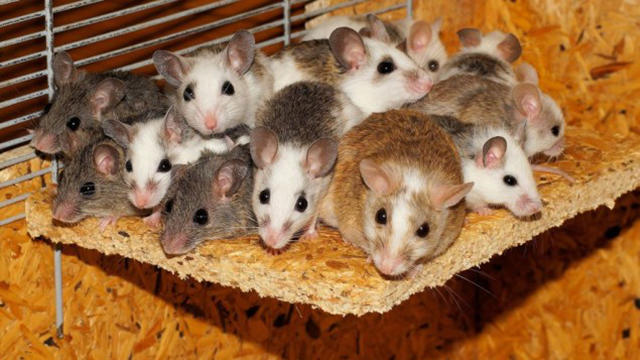Israeli scientists may have found the key to violent, confrontational and all-round aggressive male behavior

Researchers at the Weizmann Institute have discovered what could be the secret to civil behavior in men – a protein that makes them less aggressive and more accepting of strangers. With further research, the Weizmann team hopes to better understand how aggressive behavior is set off, and perhaps better ways to control that behavior.
That “men are from Mars” has been clear for a long time – at least since 1993, when the eponymous book that also pegged women as “being from Venus” was released. That “martian” aspect of male behavior refers to the warlike qualities associated with Mars – qualities seen in the male gender in mammals from humans on down, all the way to mice.
It was research on aggressive and maternal behavior in mice that the Weizmann Neurobiology Department team, including Dr. Tali Kimchi and her graduate student Niv Scott, in collaboration with Dr. Ofer Yizhar and Dr. Matthias Prigge, a postdoctoral fellow in his lab, that yielded evidence that a protein known as tyrosine hydroxylase, or TH, was associated with aggression in males.
Activate TH-containing neurons in male mice, and their aggression level went down significantly; take some away, and the males were as wild and violent as ever.
The data on male aggression was actually an unanticipated finding in the research the team was doing, which was concentrated on trying to determine if there was a neurochemical trigger that prompted maternal behavior in females. In research published last month in the journal Nature, the team described the results of its research, which highlighted the role of TH in both maternal behavior in females, and aggressive behavior in males. While TH is found in both male and female brains, it affects the genders in profoundly different ways.
It’s long been observed that female mice, even those that have never had offspring, act in ways that can be defined as maternal. For example, they will carry a baby left in the corner of the cage back to the nest, and spend time grooming a newborn. This tendency becomes amplified once those mice turn into mothers. Males, in contrast, are generally aggressive and territorial. They may ignore strange pups or else violently attack them. However, males will become parental for a short period after mating with a female, starting around the birth of their pups.
To understand how parenting behavior works, the researchers zeroed in on a small structure in part of the brain known as the hypothalamus, called the anteroventral preventricular nucleus, or AVPV, which is larger in female mice than in males. TH-containing neurons, they found, are also more prevalent in females – leading the researchers to suspect that the protein could be associated with the enhanced female parental behavior.
Using advance genetic and neuro-biochemical tools, the team first increased and then decreased the amount of TH in both adult male and female mice – just in neurons of this particular brain region. Then the researchers recorded how these changes affected the parenting styles of the mice. The team also employed optogenetic technology, in which neurons are activated by light, to precisely manipulate the activity of TH-containing neurons – literally, at the flip of a light switch.
The researchers found that they were able to trigger maternal actions in female mice – both virgins and mothers – by elevating the TH levels in these neurons. Even stimulating the neurons optogenetically for just a few minutes was enough to turn on the female’s motherly instincts, sending her scurrying back to the nest to ensure that the pups were safe.
Manipulating the neurons even affected other aspects of mothering behavior, including enhancing blood levels of oxytocin – a hormone associated, among other things, with lactation and female reproductive behavior in general. Stimulating the neurons increased activities in those areas as well, while “turning off” the neurons using the team’s advanced techniques lowered their levels of oxytocin and severely impaired their maternal instincts.
In males, however, the effects were quite different. Efforts to increase nurturing behaviors by activating TH-containing neurons failed; the male mice were no more “fatherly” than they had been before. But they were, it turned out, less aggressive – less inclined to attack other mice, whether pups or males, even in circumstances where aggression could be expected, like when another male got too close to a mouse’s “comfort zone.” The more TH-containing neurons activated in the brain, the less aggressive a mouse was; but reducing the neurons caused mice to act more aggressively than ever.
“By controlling the amount and activities of these unique neurons, we were able to manipulate the maternal behavior of the females and the aggression of the males,” says Kimchi. “Our results hint that maternal behavior arises from neuronal networks that are largely hardwired. These are different from those of males, and they are at least partly regulated by the hormone oxytocin.”
The findings may in the future provide insight into the ways that male and female brains function when it comes to such conventional gender-related activities as tending to infants, and other innate reproductive and social behaviors, the researchers said.
Kimchi hopes that this discovery “may ultimately advance our understanding of the biological factors that contribute to mental disorders, which have a social aspect, as well as gender differences. These include postpartum depression, aggression and autism spectrum disorders,” he added.
